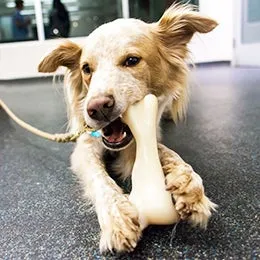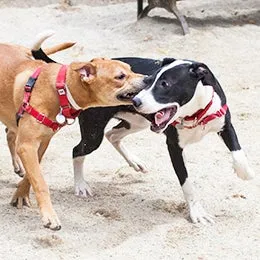Every dog owner dreams of a well-behaved companion, but the reality is that many pups exhibit what we perceive as “bad” behaviors. From persistent barking to destructive chewing, these can be frustrating, confusing, and sometimes even dangerous. Understanding the root causes behind these actions is the first step toward building a harmonious relationship with your canine friend and effectively addressing common behavior problems in dogs. This comprehensive guide from Dog Care Story delves into some of the most prevalent issues, offering insights into why they occur and practical strategies for management and training.
Deciphering Dog Behavior: Why Issues Arise
Dogs communicate through their actions, and what appears to be a “problem” behavior is often a natural canine instinct or a reaction to their environment, driven by factors like fear, anxiety, boredom, or a lack of proper training. Just like humans, dogs experience emotions and react to their surroundings. Ignoring these behavioral cues can lead to escalation, making early recognition and intervention crucial. By learning to interpret your dog’s signals, you can often pre-empt undesirable actions and guide them toward more acceptable alternatives.
Aggression: A Serious Concern
Aggression is perhaps the most concerning of all canine behavior issues due to its potential for harm. It can manifest in many forms, including fear aggression, territorial aggression, resource guarding, or even pain-induced aggression. A dog might growl, snarl, lunge, or bite when feeling threatened, protective, or simply overwhelmed. Recognizing the early signs of aggression, such as stiff body language, whale eye (showing the whites of their eyes), or a low growl, is vital. It’s important to remember that aggression is rarely about malice; it’s often a dog’s way of communicating discomfort or fear.
 A snarling dog showing teeth, displaying aggressive body language, with a handler trying to intervene.
A snarling dog showing teeth, displaying aggressive body language, with a handler trying to intervene.
Addressing aggression requires careful observation, identifying triggers, and often involves professional guidance from a certified dog trainer or veterinary behaviorist. Self-treatment of aggression can be risky and may inadvertently worsen the problem. For specific types of aggression, such as possessive guarding over food or toys, understanding the dynamics is key to preventing escalation. Learning to effectively manage and stop possessive aggressive dog behavior can significantly improve safety and quality of life for both dog and owner.
Excessive Barking and Howling
Barking is a natural and necessary form of canine communication. Dogs bark to alert, greet, play, express boredom, seek attention, or respond to anxiety. However, when barking becomes excessive and constant, it transforms into a common behavior issue that can disrupt households and neighbors. Similarly, howling, while less common than barking, also serves various functions, from calling out to other dogs to expressing loneliness or responding to high-pitched sounds like sirens.
 A small dog barking intensely, possibly at a window or a person, illustrating common dog barking behavior.
A small dog barking intensely, possibly at a window or a person, illustrating common dog barking behavior.
To address excessive vocalization, the first step is to identify the underlying cause. Is your dog barking at passersby, strangers at the door, or out of boredom when left alone? Are they howling due to separation anxiety or in response to external stimuli? Once the trigger is identified, targeted training and environmental modifications can be implemented. This might include teaching a “quiet” command, managing stimuli, ensuring adequate exercise and mental stimulation, or desensitization techniques. Effectively correcting bad behaviour in dogs, including excessive barking and howling, requires consistency and patience.
 A dog with its head tilted back, howling, communicating through a distinct vocalization.
A dog with its head tilted back, howling, communicating through a distinct vocalization.
Destructive Chewing: Natural Instinct Gone Wrong
Chewing is an instinctual and essential activity for dogs. Puppies chew to explore their world and relieve teething discomfort, while adult dogs chew to keep their jaws strong, teeth clean, and alleviate boredom or anxiety. However, when your furniture, shoes, or personal belongings become the target, it becomes a destructive and frustrating behavior issue.
 A golden retriever puppy chewing on a wooden chair leg, showing destructive chewing behavior in dogs.
A golden retriever puppy chewing on a wooden chair leg, showing destructive chewing behavior in dogs.
The key to managing destructive chewing is to redirect this natural impulse onto appropriate outlets. Provide a variety of suitable chew toys, rotate them to maintain interest, and ensure your dog gets plenty of physical and mental exercise to burn off excess energy and reduce boredom. Management strategies like crating (when done positively) or supervision can also prevent access to inappropriate items. For dogs whose destructive chewing stems from anxiety, addressing the underlying stress is paramount.
Resource Guarding (Food and Objects)
Resource guarding occurs when a dog becomes defensive over possessions like food, toys, sleeping spots, or even people. This behavior can range from subtle body language (like freezing or eating faster when approached) to overt aggression (growling, snapping, or biting). It’s a natural instinct, rooted in a dog’s desire to protect valuable resources, but in a domestic setting, it can be a significant problem.
 A dog hunched over a food bowl, demonstrating food guarding behavior with a protective stance.
A dog hunched over a food bowl, demonstrating food guarding behavior with a protective stance.
Prevention is often the best approach, especially with puppies. Teach your dog that humans approaching their food or toys results in good things, such as extra treats, rather than removal. Techniques like trading (offering a higher-value item for the one they are guarding) can be effective. For established resource guarding, professional help is highly recommended to safely and effectively modify the behavior without escalating the dog’s defensive reactions.
Mounting and Masturbation: Normal but Manageable
Mounting, humping, or masturbation is a common behavior in dogs, often misunderstood as purely sexual. While it can be sexually motivated, especially in intact dogs, it’s also a display of excitement, play, stress, or even an attempt to assert social dominance (though often misconstrued). Dogs may mount other dogs, objects, or even people’s legs.
 A small dog mounting another dog or a person's leg, illustrating common dog humping behavior.
A small dog mounting another dog or a person's leg, illustrating common dog humping behavior.
If mounting becomes excessive or socially awkward, there are steps to curb it. Spaying or neutering can sometimes reduce sexually motivated mounting, but other forms may persist. Redirecting the behavior with a toy, increasing exercise, or teaching impulse control can be effective. Understanding the context – is it play, stress relief, or overexcitement? – can help you choose the most appropriate intervention.
Mouthing, Nipping, and Biting
Mouthing, nipping, and biting are distinct behaviors, each with different implications and training approaches depending on the dog’s age and intent.
Puppy Biting: A Learning Phase
For puppies, exploring the world with their mouths and nipping during play is completely normal. They learn bite inhibition – how hard they can bite without causing pain – through interactions with their littermates and mother. It’s crucial for owners to continue this education. If a puppy’s nipping is not managed, it can become a more serious issue as they grow. Early life experiences, such as those encountered by puppy mill dog behavior problems, can sometimes exacerbate these tendencies, leading to greater challenges in teaching bite inhibition and appropriate social skills.
 A playful puppy mouthing or nipping at a person's fingers, a typical puppy biting behavior during play.
A playful puppy mouthing or nipping at a person's fingers, a typical puppy biting behavior during play.
Teaching bite inhibition involves reacting consistently when a puppy nips too hard, such as yelping and withdrawing attention, then rewarding gentle play.
Adult Dog Mouthing: Teaching Bite Inhibition
In adult dogs, mouthing can still occur during play, often without harm, demonstrating good bite inhibition. However, sometimes adult dogs may mouth or nip in ways that are uncomfortable or indicative of underlying stress or a lack of boundaries. This requires teaching the dog to be gentle or to redirect their mouthy behavior towards toys. Consistent training, setting clear boundaries, and rewarding calm, non-mouthy interactions are key.
 An adult dog gently mouthing a human hand, demonstrating controlled bite inhibition.
An adult dog gently mouthing a human hand, demonstrating controlled bite inhibition.
Separation Anxiety: When Alone Time is Stressful
Separation anxiety is one of the most heartbreaking behavior issues for owners. It’s a condition where dogs experience extreme distress when left alone, leading to destructive behaviors, excessive vocalization, house soiling, or even self-harm. Signs include scratching at doors, chewing on furniture, incessant barking or howling, and sometimes frantic attempts to escape. Breeds like the Cavalier King Charles Spaniel can exhibit specific behavior problems including a predisposition to separation anxiety due to their highly attached nature.
 A distressed dog looking out a window, showing signs of separation anxiety and longing for its owner's return.
A distressed dog looking out a window, showing signs of separation anxiety and longing for its owner's return.
Addressing separation anxiety involves a multi-faceted approach, often requiring desensitization exercises, counter-conditioning, and sometimes medication in severe cases. The goal is to gradually accustom the dog to being alone for increasing periods, associating solitude with positive experiences. Creating a safe, comfortable space and providing engaging toys can help, but consistency and patience are paramount.
Whining: Communication or Concern?
Whining is another common vocalization that dogs use to communicate. It can signal a variety of needs or emotions: a desire for attention, a need to go outside, excitement, pain, or anxiety. Understanding why your dog is whining is crucial to responding appropriately.
If your dog whines for attention, ignoring the whining (and rewarding quiet behavior) can teach them that whining doesn’t get results. If it’s a need, fulfill it promptly. If whining is accompanied by other signs of pain or discomfort, a veterinary check-up is essential. Whining due to anxiety, such as during thunderstorms, may require comforting and desensitization techniques. Just like with barking, identifying the trigger is the first step to effective management.
Seeking Professional Guidance
While many common dog behavior issues can be addressed with consistent training and environmental management, some problems, particularly aggression or severe anxiety, warrant the expertise of a professional. A certified professional dog trainer or a veterinary behaviorist can provide tailored strategies, identify underlying medical conditions, and ensure the safety of both your dog and your family. Early intervention is always best, as addressing behaviors before they become deeply ingrained makes the training process more efficient and successful.
Conclusion
Understanding the diverse range of common behavior issues in dogs is fundamental to fostering a positive and healthy relationship with your pet. From aggression and excessive barking to destructive chewing and separation anxiety, each challenge presents an opportunity for deeper connection through training and comprehension. Remember, your dog isn’t misbehaving out of spite, but rather communicating a need or reacting instinctively. With patience, consistency, and the right approach—and professional help when needed—you can guide your dog to overcome these obstacles and become a well-adjusted, cherished member of your family. If you’re struggling with specific behaviors, don’t hesitate to reach out to a professional dog trainer or veterinary behaviorist for personalized support.
